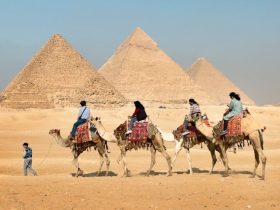Somalia: The Resilient Land of Culture, Coastlines, and Untold Stories
Somalia, located in the Horn of Africa, is often overlooked by travelers. Yet behind the headlines lies a country rich in history, vibrant culture, and unspoiled natural beauty. From ancient cities and traditional music to the longest coastline in mainland Africa, Somalia offers far more than many imagine.
Despite decades of hardship, Somalia remains a land of resilience. This blog explores the real Somalia—the one filled with spirit, scenery, and stories worth sharing.
A Glimpse Into Somali History and Heritage
Somalia’s history stretches back thousands of years. The ancient city of Mogadishu, once called the “White Pearl of the Indian Ocean,” was a major center for trade between Africa, the Middle East, and Asia. Coastal towns like Berbera and Zeila were part of the Islamic sultanates that thrived on trade, scholarship, and architecture.
Somalia was also a key player in the Frankincense trade—one of the world’s oldest industries. Somali sailors and merchants were expert navigators of the Indian Ocean, long before European colonization.
Today, remnants of ancient mosques, forts, and ports can still be seen in various parts of the country, giving visitors a direct connection to the region’s rich past.
The Longest Coastline in Mainland Africa
One of Somalia’s greatest natural assets is its coastline, which stretches over 3,300 kilometers along the Indian Ocean and the Gulf of Aden. That makes it the longest mainland coastline in Africa.
The white-sand beaches of Lido Beach in Mogadishu, Bosaso, and Kismayo are breathtaking. With turquoise waters, coral reefs, and traditional fishing boats bobbing in the waves, Somalia’s coastal beauty remains largely untouched by mass tourism.
These beaches offer the potential for future eco-tourism, water sports, and sustainable fishing communities.
Learn more about Somali marine biodiversity through UNEP’s Regional Seas Programme.
Somali Culture: Poetry, Music, and Identity
Somali culture is deeply rooted in oral traditions, especially poetry. Often called a “Nation of Poets,” Somali society values storytelling, metaphor, and rhythm as forms of both entertainment and political discourse.
Somali music blends Arab, African, and Indian influences. The oud, tabla, and local drums form the core instruments in traditional Somali songs.
Food is another cultural gem. Try canjeero (a Somali-style pancake), bariis iskukaris (spiced rice), or suqaar (diced meat stew)—dishes that reflect centuries of cross-cultural exchange.
Somali People: Resilience and Hospitality
Somalia has endured conflict, drought, and displacement. Yet its people remain known for their hospitality, strength, and sense of community. Whether in bustling cities or rural villages, Somali families warmly welcome guests with tea, stories, and generous meals.
The Somali diaspora—spread across the UK, US, Canada, and beyond—has also played a key role in rebuilding, investing in education, business, and development.
Wildlife and Natural Beauty
Inland Somalia is home to savannahs, mountain ranges, and semi-arid deserts. The Cal Madow Mountains in the north offer rare biodiversity, with plant and animal species found nowhere else on earth. Somali wild goats, antelope, and desert foxes roam freely in these rugged landscapes.
Though political instability has hampered formal conservation, efforts are underway to protect these ecosystems.
Why Somalia Deserves a Second Look
Somalia is not just a place of struggle—it’s a country of stories waiting to be heard and beauty waiting to be explored. From ancient coastal towns and poetic heritage to sun-drenched beaches and resilient communities, Somalia is a destination of potential.






Leave a Reply